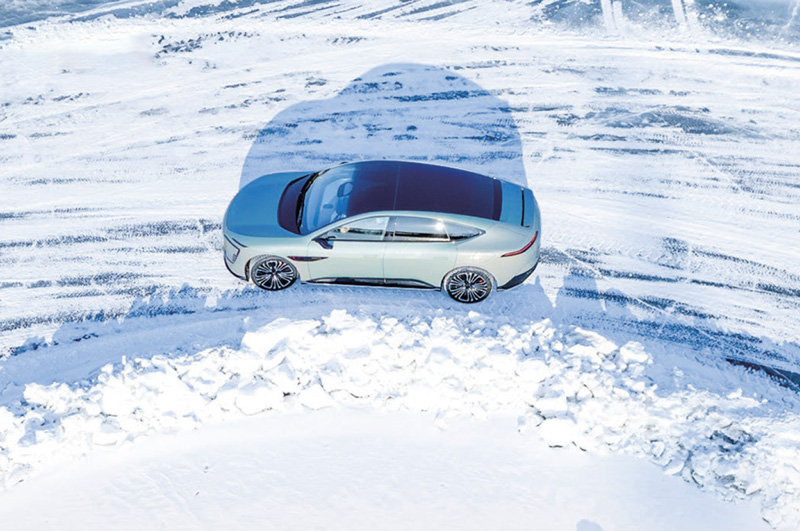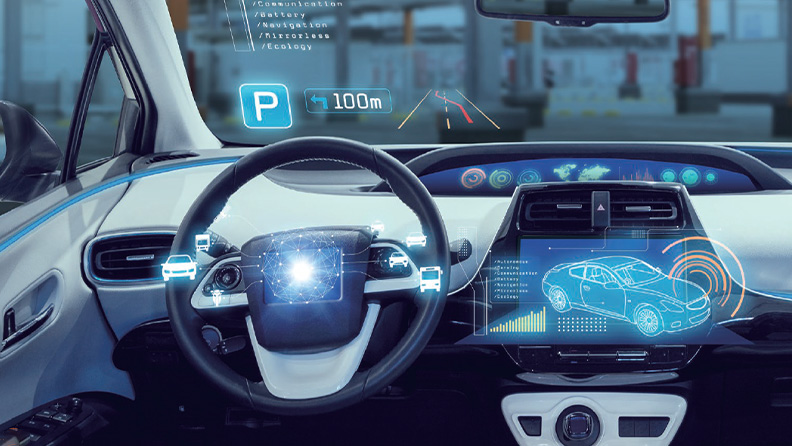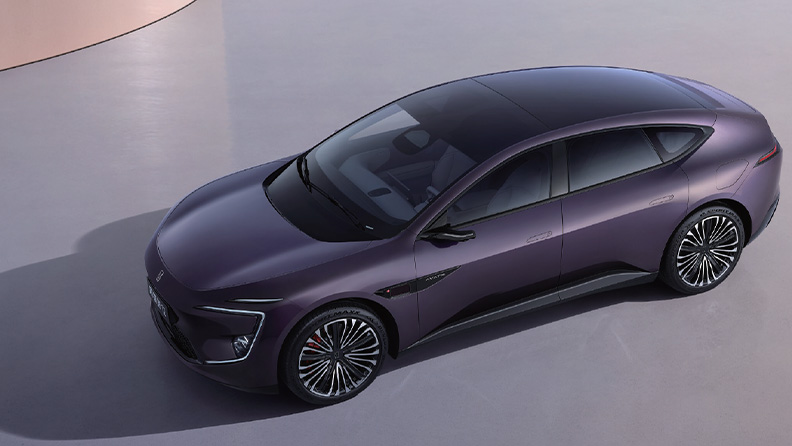Intelligent diagnosis, quick response
Huawei's iTRACK, Making Your Ride Smoother
What will cars look like in the future? They will be smarter and safer.
This is not just wishful thinking — cars are truly advancing rapidly. Take the AVATR 12, for example. It comes with an Advanced Driving System that offers a smooth driving experience, even on the highway. The system behaves like a skilled driver, automatically adapting the speed to match the traffic conditions. AVATR 12 also provides powerful voice control and a 360-degree panoramic display, allowing drivers to view the vehicle status and surrounding environment in real time through a simple and intuitive UI. When the car is approaching an obstacle, the system automatically plays a prompt tone. The car's intelligent and user-friendly design makes driving easier, safer, and more comfortable.
AVATR 12 is a testament to the intelligent and user-friendly development of Chinese automobiles. According to J.D. Power's 2024 China Tech Experience Index (TXI) Study, the industry's TXI Innovation Index score increased from 528 in 2023 to 550, indicating that China's automotive industry has reached record highs in terms of intelligence. In the future, as technology continues to advance and consumer demands rise, intelligence and user-friendliness will be essential for the vehicle and service experience. Smart cars will not just serve as methods of transportation; they will be like partners that provide people with intelligent, automated, and user-friendly experiences.
Reshaping the Driving Experience
Many people have wonderful imaginations about smart driving. But beyond fancy features, safety and comfort are still central for most drivers.

In an episode of Huawei Digital Power's Carbon Talk — "iTRACK, Making Your Ride Smoother" — we take a real drive test. When AVATR 12 passes a speed bump without Huawei's DriveONE iTRACK, people in the car feel noticeable jolts, and water spills from a glass placed inside the cockpit. However, when the car is equipped with Huawei's DriveONE iTRACK, although the water in the glass ripples, it does not spill, and the ride is a lot less bumpy.
iTRACK is an innovative technology by Huawei's DriveONE. It intelligently and proactively operates the ePowertrain through ultra-fine sensing and real-time self-management. Huawei's iTRACK redefines the ePowertrain, achieving cross-generational competitiveness and independent intelligence. AVATR 11 and AVATR 12 are equipped with Huawei's iTRACK, which makes the vehicle drive system more sensitive to road conditions. Whether encountering speed bumps, pits, or challenging weather like snow and freezing rain, the system can promptly adjust the driving status to ensure stable, comfortable, and safe driving.
Highly Sensitive to Road Conditions, Ensuring Driving Safety
Over millions of years of evolution, humans have developed a highly advanced nervous system that helps us quickly adapt to diverse environments. The brain coordinates with the peripheral nervous system and commands the body's movements. This allows for rapid neural reflexes within milliseconds, enabling the body to respond promptly and accurately to changes in the environment.
A car is a tool, but, in a way, it serves as an extension of the human body. A real smart car should have visual and tactile senses like a human being, being able to perceive changes in the external environment. In addition, it should have a brain and a nervous system to make timely judgments and act based on the perceived information.
Huawei's iTRACK acts like the car's nervous system. It can "see," "hear," or even "touch" subtle changes in the external environment, make correct judgments very quickly, and optimize its actions. Using innovative, intelligent sensing technology and an adaptive algorithm for intelligent torque adjustment, Huawei's iTRACK improves driving performance in multiple scenarios, quickly responding to environmental changes. For example, the all-scenario sensing technology can sense road conditions 10,000 times per second based on signals transmitted by high-precision sensors. It identifies what's going on and determines issues like road adhesion, transmitting the information to the controller. Thanks to these powerful capabilities, Huawei's iTRACK can keep cars stable in different driving scenarios, such as snow, ice, rainy days, and bumpy roads, guarantee optimal tire grip performance, and ensure safe driving.
Winter in snowy regions challenges many drivers' skills, patience, and attention. Icy roads have low adhesion, which can cause vehicles to skid or drift unexpectedly and put the drivers and passengers at risk. Conventional control solutions feature a wheel speed sensor, which is not very precise and takes a long time to realize that the car is skidding. Once it does, the torque reduction command has to go through the ESP, VCU, MCU, and motor, reducing control and slowing down the response. Then it will be too late to correct a car that has already skidded and deviated. In contrast, Huawei's iTRACK can detect road conditions 10,000 times per second, adjust the torque 1000 times per second, and take actions within milliseconds, effectively preventing skidding and ensuring safety.
Another accident-prone scenario is driving into an underground parking lot on rainy days. The narrow passages become wet and slippery due to the roads' epoxy coating, so vehicles may skid or hit a wall. Huawei's iTRACK is specifically designed to address the challenges of driving on slippery roads. Whether it is four-wheel, two-wheel, or single-wheel skids, iTRACK can accurately identify and promptly suppress skidding.
Smooth Rides, Maximum Comfort
Along with essential safety features like anti-skid performance, comfort and stability are equally crucial. Experts suggest that in the era of smart vehicles, the powertrain and chassis systems — responsible for power output and ensuring safety — will play an even more significant role. Huawei's iTRACK not only redefines the ePowertrain's capacity in vehicle control but also expands the control of the chassis to enhance comfort. By leveraging intelligence, shortening control loops, and enabling proactive management, iTRACK allows for seamless control from sensing to execution, enhancing the overall driving experience.
Huawei's iTRACK features smart chassis technology that significantly improves driving comfort. In common scenarios like speed bumps, it effectively smooths out the ride, making it safer and more comfortable. For example, when the vehicle passes over a speed bump, iTRACK reduces the usual fluctuations in wheel speed, bringing a smoother ride.
Why does the vehicle experience jolts and shaking, to begin with? When passing a speed bump, the tires hit the speed bump, momentarily leave the ground, hit the ground again, and start the next hop. All the movements reduce comfort. Huawei's iTRACK quickly and accurately detects road conditions and wheel status, and promptly and precisely adjusts the torque using an adaptive adjustment algorithm. This effectively reduces jolts when the car goes over a speed bump. On top of that, Huawei's iTRACK uses millisecond-level closed-loop control, which makes it 100 times faster than traditional systems. Such a control allows the wheels to adjust quickly, reducing impact and minimizing lingering vibrations. Tests show that Huawei's iTRACK can reduce the wheel speed fluctuation by 50% and shorten residual vibrations by 40%.
Huawei's iTRACK, Making Travel Smarter
Fueled by the rapid advancements in vehicle intelligence and connectivity, the intelligent connected vehicle (ICV) industry has become one of the fastest-growing sectors in China. According to McKinsey, the global ICV market is expected to reach $1.5 trillion by 2030. With the help of AI, deep learning, and big data analytics, vehicles are now able to navigate complex road and traffic conditions in real time, make autonomous decisions, and deliver significant improvements in safety, comfort, and convenience.
Huawei's iTRACK couples intelligent driving and intelligent cockpit systems to provide users with a smarter and more efficient driving experience. It uses the intelligent, comprehensive architecture of the ePowertrain as the foundation to implement millisecond-level super nerve reflexes. Its unique technologies — intelligent sensing and the adaptive algorithm for intelligent torque adjustment — enable vehicles to easily adapt to complex road conditions.
When you are driving an AVATR 12 and enjoying the thrilling 0–100 km/h acceleration in just 3.9 seconds, you may not even notice Huawei's iTRACK. But this is the amazing part — it instantly suppresses skidding and bumps, providing safety and comfort for everyone in the vehicle.
Huawei's iTRACK, ride smoother.




